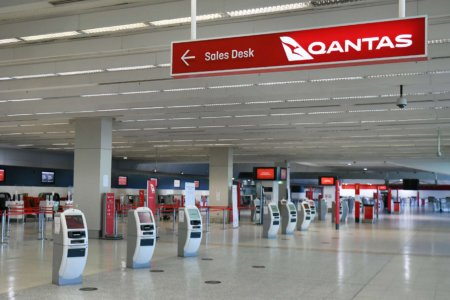
As of today, international students have been unable to enter Australia for 469 days. To say they are upset would be an understatement.
“We are seeing that there is increasing frustration with Australia as our border closures are now within a global context where other countries are relaxing restrictions and openly managing and facilitating the safe return of students,” said The Lygon Group head of research Angela Lehmann. Study International spoke to Lehmann on shifting tides and attitudes — and how Australia could begin to rethink its plan.
Shift perspectives on the value of international students
Inundated with news of pilot plans and multiple state border closures over the past year, international students have grown weary of “scollipops” — sweet, meaningless government promises of international student return. Now, they are asking how countries like Canada and the US are welcoming students back for fall 2021, while their plights and campaigns fall on deaf ears.

Despite opening numerous vaccination centres in major cities, Australia’s vaccine rollout is falling behind compared to other major economies. Source: William West/AFP
Before we can compare Canada’s response to Australia’s, we must first understand the broader role international students play in each country’s socioeconomic growth. The Canadian government has included international students in its immigration targets, introducing pathways for 90,000 students to become permanent residents.
Similarly, Australia’s loss of migrants has resulted in its slowest population growth since World War II — which will undoubtedly affect Australia’s GDP and economic growth post-pandemic. “While Australia has also released its most ambitious migration targets, Australia is still yet to recognise the importance of international education within this looming demographic crisis,” Lehmann explains.
Speed up vaccine rollout
With less than 5% of the population vaccinated, the Organisation for Economic Co-operation and Development has said that Australia is the slowest to vaccinate. Coming from a country praised for its early handling of the pandemic, this is not only surprising but confusing for international students, universities and stakeholders running thin on patience. “Our relatively low case numbers and containment of the virus were potentially going to work to our strong advantage once the borders reopened,” Lehmann recalls.
ICYMI: Can Australia adopt a Canada model for international students? #StudyCanadahttps://t.co/EUYIgf3OKV pic.twitter.com/lKjyzUkC7L
— Study International (@Study_INTNL) June 28, 2021
Having monitored student sentiment on social media, she confirms that international students stuck offshore are following the response of various countries. They are comparing, contrasting, and forming new decisions. One thing is clear: “The future of Australia’s international education recovery now largely relies on the rapid and effective rollout of the vaccine here, and putting in place a solid timeline for its borders to reopen,” Lehmann says.
As students become more discerning higher education customers, they are more cognizant of how their Australian universities continue to support them. “We have institutions who have worked tirelessly to support international students both onshore and offshore during the pandemic,” Lehmann maintains, assuring that the country’s low number of cases will “work in our favour” once borders reopen as students now seek a safe study destination.
“It would be really helpful to everyone in the sector, including international students, if a whole-of-government timeframe or framework could be implemented that could clearly outline the projected relationships between vaccination numbers, return of Australian citizens and the opening of borders to international students,” she adds.

As Australian cities move in and out of lockdown, many are questioning the long-term efficacy of Australian border closures. Source: Patrick Hamilton/AFP
Greater federal action on border restrictions
Frustrations lie largely with the federal government, which continues to enact hardline border policies without a reliable return plan for international students. While states, territories, and universities have come up with plans to bring students back, nothing can happen as long as the border remains shut to international students. As Lehmann says, “Students don’t care which level of government makes which decision. They just care about getting on with their future.”
“Once we can safely reopen our borders to international students, we will be in a good position to rebuild. The recovery will be slow, and it will be long, but we will recover,” she says. “For those students still waiting to return to Australia – or to come here for the first time – my advice to you is to keep going. You are a much valued and much missed part of Australian society.”










